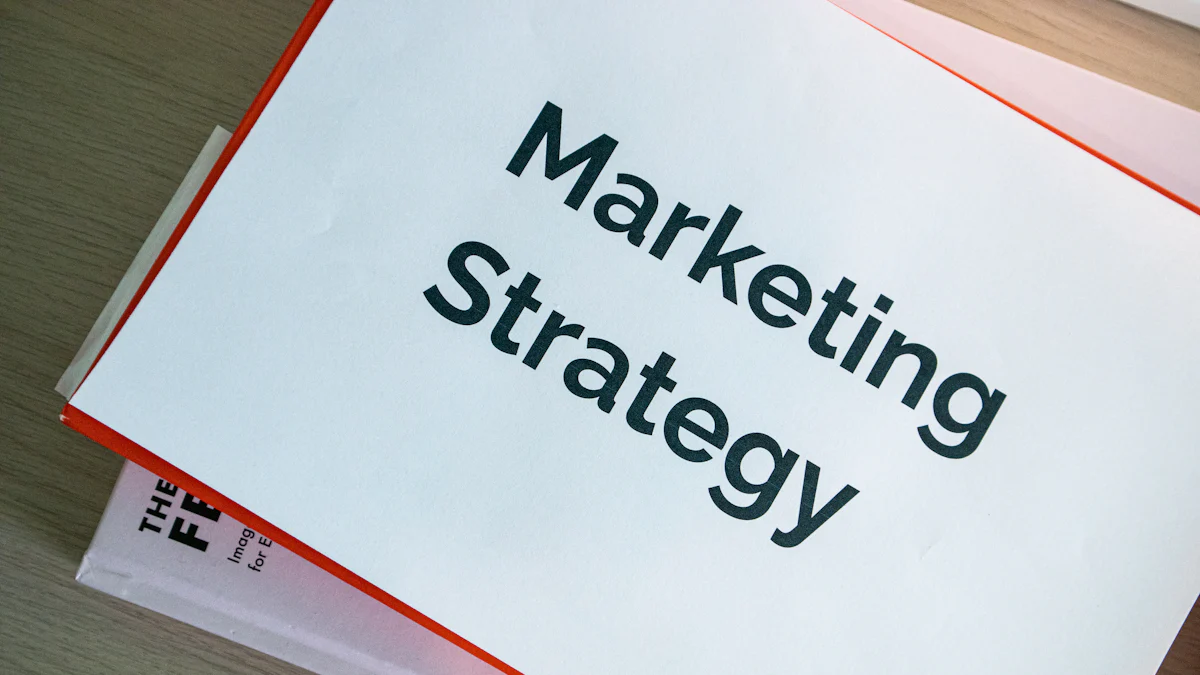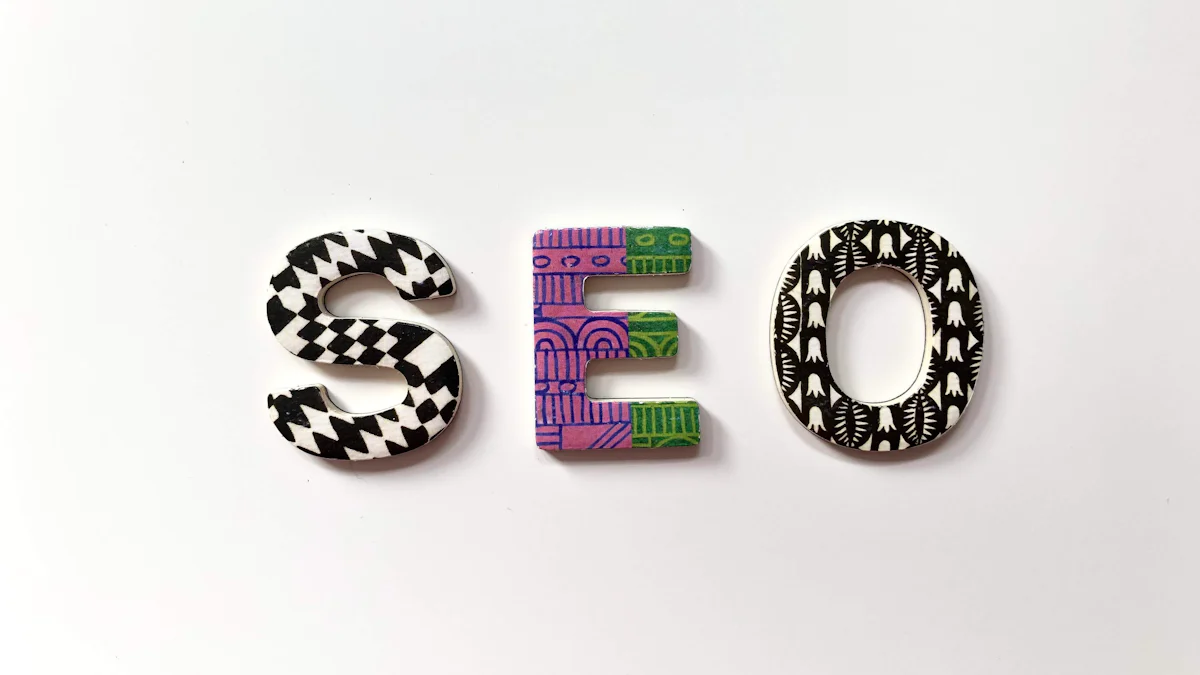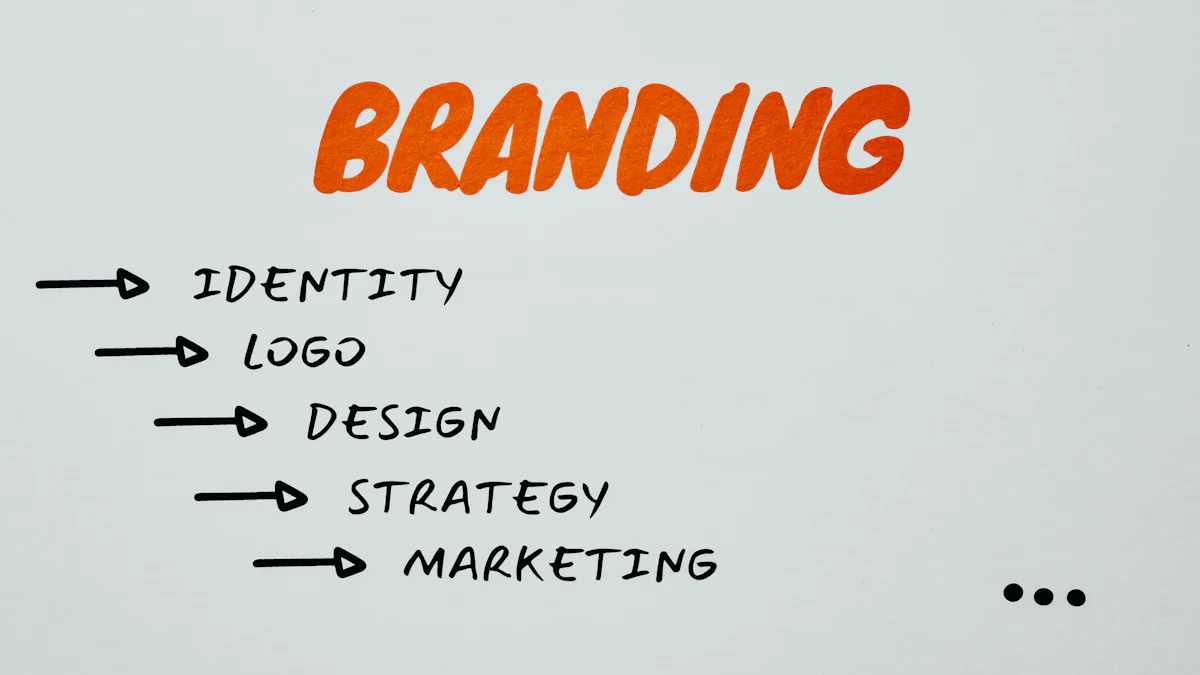Key Takeaways
A good website improves user experience and builds trust. This leads to more engagement and fewer people leaving quickly.
Mobile-friendly design is a must. Most web traffic comes from phones, so businesses need to adjust their sites for mobile users.
Clear and strong calls-to-action (CTAs) help users take the right steps. This greatly increases the chances of conversions.
Matching visuals on all platforms makes branding stronger. It helps users trust and recognize the brand easily.
Testing and updating design often ensures websites meet user needs. This keeps improving the site and supports marketing goals.
The Role of Web Design in Digital Marketing

Aligning Web Design with Marketing Objectives
Web design plays a crucial role in aligning with a business's marketing strategy. A well-designed website acts as a continuous marketing tool, fostering trust and engagement with potential customers. High-quality website design is essential, as consumer expectations for online experiences have risen significantly. Research indicates that 88% of B2B customers found the information on a brand’s website to be a key factor in their purchasing decisions.
When marketing and design teams collaborate effectively, they create cohesive branding assets that convey a unified message. This alignment positively impacts key metrics such as conversion rates, customer engagement, and brand awareness. Organisations with aligned departments report up to 38% higher sales win rates. By ensuring web design reflects marketing objectives, businesses can create an effective digital marketing campaign that resonates with their audience.
First Impressions and Their Impact on Marketing
First impressions matter, especially in digital marketing. A website often serves as the first point of contact between a business and its audience. Users form opinions about a brand within seconds of landing on its site. Poor design can lead to mistrust and high bounce rates, while an attractive and functional website encourages users to explore further.
Visual appeal, intuitive navigation, and mobile responsiveness contribute to a positive first impression. These elements not only enhance user experience but also establish credibility. A strong first impression sets the tone for an effective digital marketing campaign, increasing the likelihood of user engagement and conversions.
The Website as the Central Hub of Digital Marketing
A website functions as the central hub of any digital marketing strategy. It connects various marketing channels, including SEO, social media, and email campaigns. The Hub and Spoke Model exemplifies this approach. The website serves as the central hub, linking to spoke pages that delve into specific topics. This structure improves navigation, enhances user experience, and aligns with search engine preferences.
Websites guide users through the marketing funnel. Awareness campaigns, such as PPC and social media, drive traffic to the site. Once there, users encounter content that reinforces the brand’s offerings and persuades them to take action. Efficient CRM systems and sales materials then convert leads into customers. By serving as the foundation for an effective digital marketing campaign, a well-designed website ensures consistent messaging and maximises results.
Enhancing User Experience Through Web Design

The Importance of Intuitive Navigation
Intuitive navigation simplifies how users interact with a website, ensuring they find information quickly. A well-structured navigation system reduces frustration and encourages users to stay longer. Websites like T-Systems demonstrate this by combining horizontal and vertical menus. The horizontal menu highlights service categories, while the vertical menu expands on these, creating a seamless browsing experience. Similarly, Avaya uses clear headings and subheadings to improve click rates and reduce clutter.
Different navigation styles cater to varied user needs:
Object-oriented navigation treats each feature as an independent unit, allowing users to explore freely.
Task-oriented navigation focuses on specific tasks, making it ideal for function-driven platforms.
Workflow-based navigation creates a linear path for completing tasks, suitable for standardised processes.
By adopting these approaches, web design enhances user experience and supports digital marketing goals.
Mobile Responsiveness and Accessibility
Mobile responsiveness is no longer optional. With 58.43% of website traffic originating from mobile devices, businesses must ensure their websites adapt seamlessly to smaller screens. Globally, over 4.32 billion active mobile internet users highlight the vast audience relying on mobile-friendly websites. Furthermore, mobile devices account for more than 58% of consumer usage, with tablets pushing this figure above 60%. These statistics underscore the importance of catering to non-desktop users.
Responsive web design ensures that content adjusts dynamically to different screen sizes. This approach improves accessibility, making websites usable for individuals with disabilities or limited internet access. A mobile-responsive website not only enhances user experience but also strengthens a brand’s reach in the competitive digital marketing landscape.
Visual Appeal and User Engagement
Visual appeal plays a pivotal role in capturing user attention. First impressions often depend on a website’s design, with an aesthetically pleasing layout encouraging users to explore further. A well-designed website evokes positive emotions, increasing the likelihood of engagement. For instance, clean layouts and harmonious colour schemes create a sense of professionalism and trust.
Good visual design also simplifies navigation. Users can easily locate key information, reducing frustration and improving retention rates. By combining visual appeal with functionality, web design becomes a powerful tool for enhancing user experience and driving engagement.
Leveraging Web Design to Improve SEO

Site Structure and Search Engine Crawlability
A well-organised site structure is essential for effective search engine optimization. Search engines rely on structured websites to crawl efficiently, ensuring valuable content is indexed and ranked. Poorly designed structures can hinder this process, wasting crawl resources and reducing visibility. Crawlability, a critical factor in SEO, refers to a search engine’s ability to navigate a website’s content seamlessly. Dead ends or broken links disrupt this process, negatively impacting rankings.
To enhance crawlability, websites should feature clear hierarchies and logical navigation paths. Internal linking plays a vital role by connecting pages and guiding search engines through the site. For example, breadcrumb navigation helps users and search engines understand the relationship between pages. A high-performing website prioritises these elements to improve its search engine optimisation efforts.
The Role of Page Load Speed in SEO
Site speed directly influences search engine optimisation and user experience. Google has considered site speed a ranking factor since 2010, with its importance extending to mobile searches in 2018. Fast-loading pages provide a better user experience, aligning with Google’s goal of prioritising user satisfaction in search results. Slow-loading websites frustrate users, increasing bounce rates and reducing engagement.
Improving site speed involves optimising images, minimising code, and leveraging browser caching. These techniques reduce loading times, ensuring users access content quickly. Google’s statement, “Like us, our users place a lot of value in speed,” highlights the importance of fast-loading pages. Businesses aiming for higher rankings must prioritise site speed as a core component of their website design strategy.
Mobile-Friendly Design for Better Rankings
Mobile-friendly design has become a cornerstone of search engine optimisation. Since 2015, Google has prioritised mobile-friendly websites in its ranking algorithm. Mobile-first indexing, introduced in 2019, further emphasises the need for responsive designs. With mobile searches surpassing desktop queries, websites must adapt to smaller screens to maintain visibility.
Responsive designs adjust layouts dynamically, ensuring usability across devices. Features like hamburger menus and larger buttons enhance navigation on mobile platforms. Search engines favour these designs, rewarding them with higher rankings. A mobile-friendly website not only improves accessibility but also strengthens its position in the competitive digital marketing landscape.
Boosting Conversion Rates with Effective Web Design

Designing Clear and Compelling Calls-to-Action
Calls-to-action (CTAs) serve as pivotal elements in conversion rate optimization. They guide users toward desired actions, such as signing up for a newsletter or purchasing a product. Effective CTAs combine clarity, visual appeal, and strategic placement to maximise impact. For instance, Prezi uses soothing colours and concise text to encourage visitors to engage. CleverTap offers dual CTAs, such as "Talk to us" and "Explore our product," providing users with flexible options. Lever takes a direct approach by inviting users to "Schedule a demo," highlighting the benefits of their service.
Designing CTAs with persuasive language can further enhance their effectiveness. Words like "only" create a sense of urgency, while phrases such as "Get a quote" clearly indicate the next step. Adding icons or contextual phrases like "Free to search" can address user concerns and build confidence. A well-designed CTA not only improves user experience but also drives higher conversion rates by simplifying decision-making.
Incorporating Trust-Building Elements
Trust-building elements play a crucial role in increasing conversions. Users are more likely to complete transactions on websites that appear credible and secure. Adding trust seals, such as Visa or PayPal logos, reassures visitors about payment safety. Displaying clear policies for delivery, returns, and warranties demonstrates transparency and reliability. Visible contact details, including phone numbers and email addresses, further enhance trust by showing that support is readily available.
Social proof also significantly impacts conversion rate optimization. Reviews and testimonials provide real-world validation of a product or service. When placed strategically, these elements help users make informed decisions. By incorporating trust-building features, web design fosters confidence and encourages users to take action, ultimately improving conversion rates.
Streamlining the User Journey for Higher Conversions
A streamlined user journey simplifies the path from initial interaction to final conversion. Websites that reduce friction points and guide users intuitively see higher conversion rates. Starbucks exemplifies this by mapping customer journeys meticulously, enhancing experiences and fostering brand loyalty. IKEA integrates online and offline touchpoints seamlessly, improving satisfaction and driving conversions.
Effective web design ensures that users encounter minimal obstacles. Clear navigation, logical page layouts, and concise content help users progress smoothly through the site. By aligning the user journey with conversion goals, businesses can optimise their digital marketing efforts and achieve measurable results.
Strengthening Branding Through Web Design

Establishing a Consistent Visual Identity
A consistent visual identity ensures that a brand remains recognisable across all platforms. Web design plays a pivotal role in achieving this by unifying elements such as colour schemes, typography, and imagery. Brands like Casper and Headspace exemplify this approach. Casper employs soothing beige and blue tones with hand-drawn illustrations to evoke comfort. Headspace uses a cheerful colour palette and charming illustrations to create a cohesive and uplifting experience.
Brand | Visual Identity Description |
|---|---|
Casper | Soothing beige and blue colours, hand-drawn illustrations, creating a sense of comfort across all platforms. |
Headspace | Cheery colour palette, inspirational quotes, and charming illustrations, ensuring a cohesive experience. |
Airbnb | People-heavy imagery and a bold pink logo, encouraging an active lifestyle through their branding. |
Chobani | Signature green packaging reflecting natural ingredients, fun illustrations, and unique digital collages on Instagram. |
Dropbox | Vibrant, colourful identity post-rebrand, conveying creativity through imagery across social media platforms. |
Consistency in web design strengthens branding by fostering trust and recognition. Users associate familiar visual elements with reliability, which enhances their connection to the brand.
Storytelling Through Design Elements
Web design enables brands to tell their stories visually, creating deeper connections with their audience. Colours, shapes, typography, and imagery communicate a brand’s personality and values. For instance, a bold colour palette can convey energy, while minimalist typography suggests sophistication. These design choices reveal a brand’s identity without the need for words.
Graphic design communicates a brand’s story through colours, shapes, typography, and imagery.
Design choices reveal a brand's personality and values, creating deeper connections with the audience.
Consistency in design builds trust and shapes a brand’s identity, allowing for non-verbal communication with customers.
A cohesive visual narrative enhances brand recognition and ensures that users remember the brand. By aligning design elements with the brand’s message, businesses can create a lasting impression.
Building Emotional Connections with Users
Web design influences emotions, which helps brands build meaningful relationships with their audience. Honest and reliable design establishes trust from the first interaction. Simplified navigation and familiar patterns enhance user comfort, reducing cognitive effort. Vibrant colours and rich typography evoke emotions, guiding users through their journey.
High-quality and interactive images offer immersive experiences.
Negative space creates focus points, guiding users toward important information.
Familiar design patterns meet user expectations and enhance comfort.
By incorporating these principles, web design fosters emotional connections that strengthen branding. Users who feel emotionally engaged are more likely to develop loyalty, which benefits long-term brand success.
Practical Tips for Optimising Web Design for Digital Marketing
Prioritising Site Speed for Better Performance
Fast-loading websites improve user experience and search engine rankings. Slow pages frustrate visitors, leading to higher bounce rates and lower engagement. Businesses can optimise site speed by compressing images, minimising code, and enabling browser caching. Tools like Pingdom Website Speed Test and GTmetrix Performance Report provide detailed insights into page speed issues. Google Pagespeed Insights evaluates websites against Core Web Vitals and offers actionable recommendations.
Tracking slow-loading pages over time is also essential. Google Analytics’ Site Speed Page Timings feature identifies problem areas, helping businesses prioritise improvements. By addressing these issues, companies can ensure their websites perform efficiently, enhancing both user satisfaction and digital marketing outcomes.
Ensuring Mobile Responsiveness Across Devices
Mobile responsiveness is critical in today’s digital landscape. With over half of global web traffic originating from mobile devices, websites must adapt seamlessly to different screen sizes. Responsive web design ensures layouts adjust dynamically, providing a consistent experience across smartphones, tablets, and desktops. Features like larger buttons, simplified navigation, and optimised images enhance usability on smaller screens.
Google’s mobile-first indexing prioritises mobile-friendly websites in search rankings. Businesses that fail to meet these standards risk losing visibility and potential customers. By focusing on mobile responsiveness, companies can expand their reach and strengthen their digital marketing strategies.
Using Analytics to Refine Design Strategies
Analytics tools offer valuable insights into user behaviour, enabling businesses to refine their web design strategies. Google Analytics tracks metrics like bounce rates, session durations, and conversion paths, helping identify areas for improvement. Mixpanel focuses on specific user actions, providing detailed event-based analysis. Matomo offers privacy-focused analytics, making it ideal for businesses prioritising data security.
Kissmetrics and AgencyAnalytics provide additional capabilities, such as tracking customer journeys and generating custom reports. By leveraging these tools, businesses can make data-driven decisions to enhance user experience and align their websites with marketing objectives. Continuous analysis ensures web design evolves to meet changing user needs.
Testing and Iterating Design Elements for Improvement
Testing and iterating design elements form a critical part of web design optimisation. This process ensures that websites meet user expectations and align with marketing objectives. Regular testing identifies areas for improvement, while iteration refines these elements to enhance performance.
A/B testing is one of the most effective methods for evaluating design changes. This approach involves creating two versions of a webpage and comparing their performance. For example, businesses can test different button colours, headlines, or layouts to determine which version generates higher engagement or conversions. Tools like Optimizely and Google Optimize simplify this process by providing actionable insights.
Heatmaps offer another valuable resource for understanding user behaviour. These visual tools highlight areas where users click, scroll, or spend the most time. By analysing heatmaps, businesses can identify which elements attract attention and which ones users ignore. This data helps designers make informed decisions about layout adjustments.
Tip: Use heatmaps alongside session recordings to gain a deeper understanding of user interactions.
Iterating design elements requires a structured approach. Designers should prioritise changes based on their potential impact. For instance, improving navigation menus or simplifying forms often yields significant results. After implementing changes, businesses must monitor performance metrics such as bounce rates, session durations, and conversion rates to assess effectiveness.
User feedback also plays a vital role in the iteration process. Surveys and usability tests provide direct insights into user preferences and pain points. Incorporating this feedback ensures that design updates resonate with the target audience.
Continuous testing and iteration create a cycle of improvement. This approach not only enhances user experience but also strengthens digital marketing strategies. By refining design elements, businesses can achieve measurable growth and maintain a competitive edge.
Web design plays a vital role in shaping the success of any digital marketing strategy. It enhances user experience, improves search engine rankings, and drives higher conversion rates. A well-designed website also strengthens branding, ensuring businesses remain memorable and trustworthy. Companies that prioritise web design as part of their digital marketing efforts position themselves for sustainable growth. By integrating cohesive design principles, businesses can create a competitive edge in the online marketplace.
FAQ
What is the role of web design in digital marketing?
Web design acts as the foundation of digital marketing. It enhances user experience, improves search engine rankings, and supports branding. A well-designed website ensures seamless navigation, mobile responsiveness, and visual appeal, which collectively drive engagement and conversions.
How does mobile responsiveness impact digital marketing success?
Mobile responsiveness ensures websites adapt to different screen sizes. This improves accessibility and user experience, which are critical for retaining visitors. Search engines prioritise mobile-friendly websites, making responsiveness essential for better rankings and broader audience reach.
Why is site speed important for digital marketing?
Fast-loading websites reduce bounce rates and improve user satisfaction. Search engines like Google consider site speed a ranking factor. Optimising images, minimising code, and enabling caching help businesses achieve faster load times, enhancing both SEO and user engagement.
How can web design improve conversion rates?
Web design improves conversions by simplifying the user journey. Clear calls-to-action, trust-building elements, and intuitive navigation guide users toward desired actions. A streamlined design reduces friction, encouraging visitors to complete transactions or engage with the brand.
What tools can businesses use to optimise web design?
Businesses can use tools like Google Analytics to track user behaviour, GTmetrix to analyse site speed, and Optimizely for A/B testing. Heatmaps and session recordings provide insights into user interactions, helping refine design strategies for better performance.